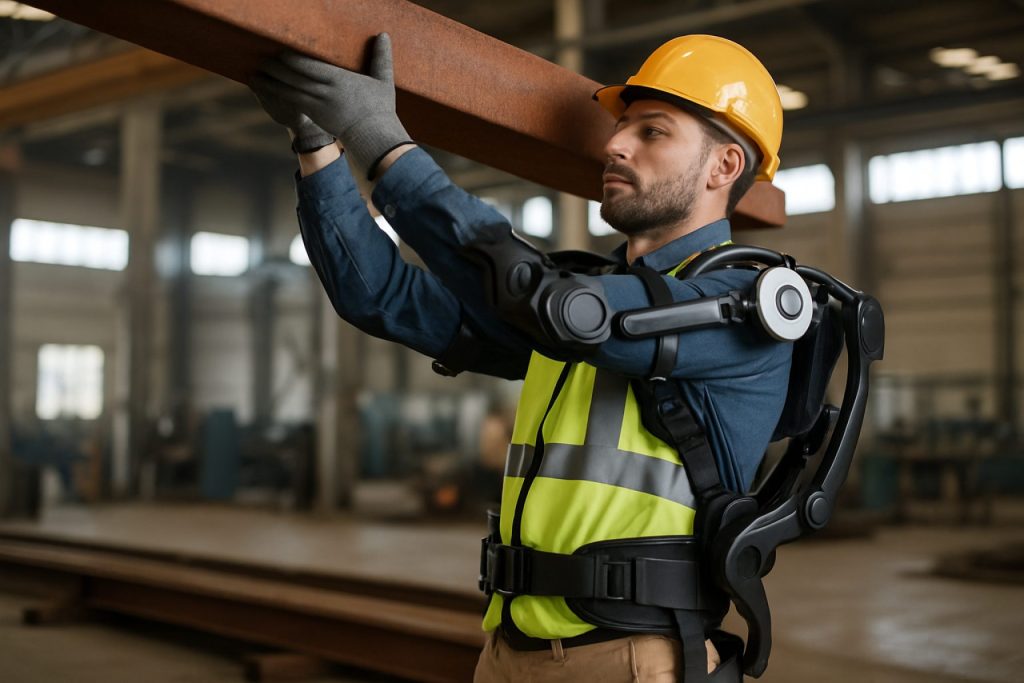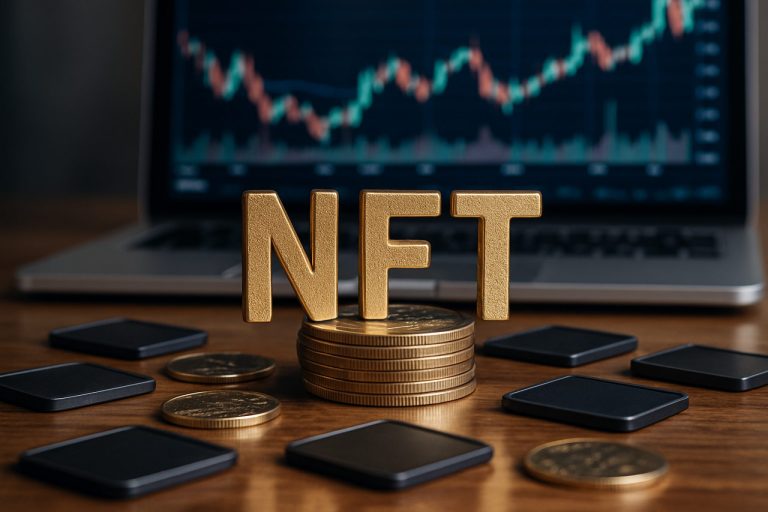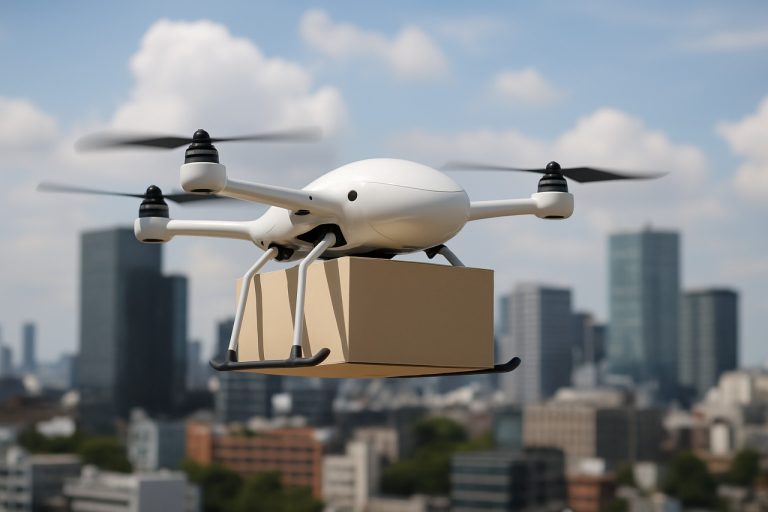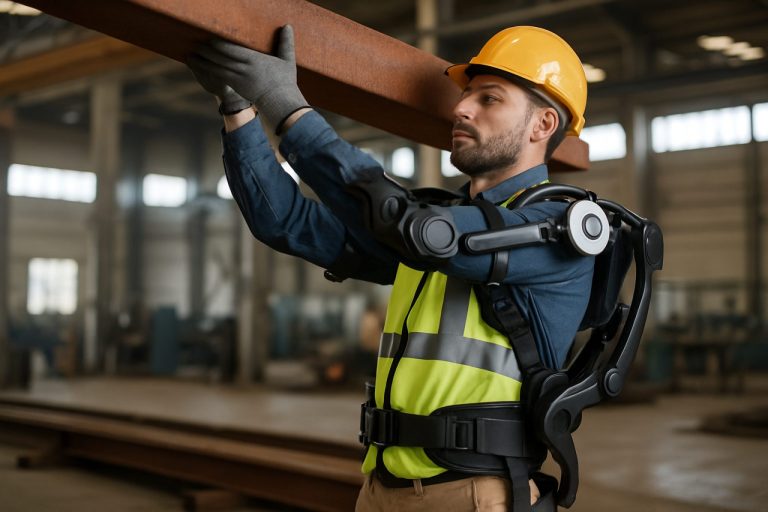
Exoskeleton Robotics for Occupational Safety Market Report 2025: In-Depth Analysis of Growth Drivers, Technology Innovations, and Global Impact. Explore Key Trends, Forecasts, and Strategic Opportunities Shaping Workplace Safety.
- Executive Summary and Market Overview
- Key Technology Trends in Exoskeleton Robotics for Occupational Safety
- Competitive Landscape and Leading Players
- Market Growth Forecasts and Revenue Projections (2025–2029)
- Regional Analysis: Adoption and Market Potential by Geography
- Challenges, Risks, and Barriers to Adoption
- Opportunities and Strategic Recommendations
- Future Outlook: Innovations and Long-Term Market Impact
- Sources & References
Executive Summary and Market Overview
Exoskeleton robotics for occupational safety represent a rapidly evolving segment within the broader industrial robotics and wearable technology markets. These wearable robotic systems are designed to augment human strength, reduce fatigue, and minimize the risk of musculoskeletal injuries in physically demanding work environments such as manufacturing, construction, logistics, and healthcare. The global market for exoskeleton robotics is projected to experience robust growth, driven by increasing workplace safety regulations, rising awareness of occupational health, and ongoing advancements in robotics and materials science.
According to MarketsandMarkets, the global exoskeleton market is expected to reach USD 3.3 billion by 2025, growing at a CAGR of over 40% from 2020. A significant portion of this growth is attributed to industrial and occupational safety applications, as companies seek to reduce injury-related costs and improve worker productivity. The adoption of exoskeletons is particularly notable in sectors with high rates of repetitive strain injuries and heavy manual labor, such as automotive manufacturing, warehousing, and construction.
Key industry players, including SuitX, Ottobock, and Honda Robotics, are actively developing and commercializing exoskeleton solutions tailored for occupational use. These systems range from passive, non-powered exosuits that provide mechanical support to powered exoskeletons equipped with sensors and actuators for enhanced assistance. The integration of artificial intelligence and IoT connectivity is further enabling real-time monitoring of worker posture and fatigue, supporting proactive safety interventions.
Regulatory bodies and safety organizations, such as the Occupational Safety and Health Administration (OSHA), are increasingly recognizing the potential of exoskeletons to address persistent workplace injury challenges. Pilot programs and collaborative research initiatives are underway to establish safety standards and best practices for exoskeleton deployment in industrial settings.
In summary, the exoskeleton robotics market for occupational safety in 2025 is characterized by rapid technological innovation, expanding industrial adoption, and a growing emphasis on worker well-being. As the technology matures and regulatory frameworks evolve, exoskeletons are poised to become a mainstream solution for enhancing occupational safety and productivity across multiple sectors.
Key Technology Trends in Exoskeleton Robotics for Occupational Safety
Exoskeleton robotics for occupational safety is rapidly evolving, driven by technological advancements aimed at reducing workplace injuries and enhancing worker productivity. In 2025, several key technology trends are shaping the adoption and effectiveness of exoskeletons in industrial and commercial environments.
- Lightweight Materials and Ergonomic Design: The integration of advanced lightweight materials such as carbon fiber composites and high-strength polymers is making exoskeletons more comfortable and less fatiguing for users. Ergonomic improvements, including adjustable fits and modular components, are enabling longer wear times and broader worker acceptance. Companies like Ottobock and SuitX are at the forefront of these developments.
- Sensor Integration and Real-Time Data Analytics: Modern exoskeletons are increasingly equipped with embedded sensors that monitor posture, movement, and load distribution. These sensors feed data into analytics platforms, providing real-time feedback to both workers and safety managers. This trend is enhancing injury prevention and supporting predictive maintenance of the devices, as highlighted by Honeywell.
- AI-Driven Adaptive Assistance: Artificial intelligence is being leveraged to enable exoskeletons to adapt dynamically to user movements and specific tasks. AI algorithms analyze user behavior and environmental conditions, adjusting support levels to optimize both safety and efficiency. This is particularly relevant in sectors like logistics and manufacturing, where task variability is high, as noted by Frost & Sullivan.
- Integration with Digital Ecosystems: Exoskeletons are being designed to interface seamlessly with broader digital workplace systems, including IoT platforms and enterprise resource planning (ERP) software. This integration allows for centralized monitoring, compliance tracking, and workflow optimization, as reported by IDTechEx.
- Focus on Passive and Hybrid Systems: While powered exoskeletons remain important, there is growing interest in passive and hybrid systems that offer support without motors or batteries. These systems are cost-effective, require less maintenance, and are easier to deploy at scale, according to MarketsandMarkets.
These technology trends are collectively driving the exoskeleton robotics market toward greater adoption in occupational safety, with a focus on usability, data-driven insights, and integration into the digital workplace of 2025.
Competitive Landscape and Leading Players
The competitive landscape of the exoskeleton robotics market for occupational safety in 2025 is characterized by rapid technological innovation, strategic partnerships, and increasing adoption across industries such as manufacturing, construction, logistics, and healthcare. The market is dominated by a mix of established robotics firms, specialized exoskeleton developers, and new entrants leveraging advancements in materials science, artificial intelligence, and sensor technology.
Key players include SuitX (now part of Ottobock), Sarcos Technology and Robotics Corporation, Hocoma, ReWalk Robotics, and Ekso Bionics. These companies are at the forefront of developing both passive and powered exoskeletons designed to reduce workplace injuries, enhance worker endurance, and improve productivity.
In 2025, Sarcos Technology and Robotics Corporation continues to lead with its Guardian XO and Guardian XT exoskeletons, which are being piloted and deployed by major industrial clients such as Delta Air Lines and Boeing. Ottobock, following its acquisition of SuitX, has expanded its global reach and product portfolio, focusing on lightweight, ergonomic exoskeletons for logistics and automotive sectors. Ekso Bionics maintains a strong presence in both industrial and healthcare applications, with its EksoVest and Ekso EVO models being adopted by companies like Ford Motor Company to reduce musculoskeletal disorders among assembly line workers.
The competitive environment is further shaped by collaborations between exoskeleton manufacturers and large industrial firms, as well as research partnerships with academic institutions. For example, Sarcos has partnered with Xcel Energy and DeWalt to tailor exoskeleton solutions for specific occupational hazards. Meanwhile, Asian players such as CYBERDYNE Inc. and Panasonic are expanding their presence in the global market, leveraging strong domestic demand and government support for workplace safety technologies.
Overall, the 2025 market is marked by intensifying competition, with leading players investing in R&D, user-centric design, and scalable manufacturing to capture a growing share of the occupational safety segment. The focus remains on improving device comfort, affordability, and integration with digital safety management systems to meet the evolving needs of industrial employers worldwide.
Market Growth Forecasts and Revenue Projections (2025–2029)
The exoskeleton robotics market for occupational safety is poised for significant growth in 2025, driven by increasing industrial automation, heightened workplace safety regulations, and a growing emphasis on worker health and productivity. According to projections by MarketsandMarkets, the global exoskeleton market is expected to reach approximately USD 1.8 billion in 2025, with a substantial portion attributed to industrial and occupational safety applications. This segment is anticipated to experience a compound annual growth rate (CAGR) exceeding 40% from 2024 to 2025, outpacing the broader exoskeleton market due to rising adoption in manufacturing, logistics, and construction sectors.
Key drivers for this growth include the integration of exoskeletons to reduce musculoskeletal injuries, lower absenteeism, and improve overall workforce efficiency. Companies such as SuitX and Ottobock have reported increased demand from automotive and warehousing industries, where repetitive lifting and overhead work are common. The adoption rate is further accelerated by government initiatives and incentives aimed at reducing workplace injuries and associated compensation costs.
- Revenue Projections: The occupational safety segment is forecasted to generate over USD 600 million in revenue in 2025, representing a significant share of the total exoskeleton market. This is supported by large-scale pilot programs and procurement contracts from major industrial players.
- Regional Growth: North America and Europe are expected to lead in market share, driven by stringent occupational safety standards and early technology adoption. However, Asia-Pacific is projected to witness the fastest growth rate, fueled by rapid industrialization and increasing labor costs.
- Sectoral Adoption: Manufacturing and logistics are set to account for over 60% of exoskeleton deployments in occupational safety, with construction and utilities following closely behind.
Overall, 2025 marks a pivotal year for exoskeleton robotics in occupational safety, with robust revenue growth and expanding market penetration. The convergence of regulatory support, technological advancements, and clear ROI for employers is expected to sustain this momentum through the forecast period IDTechEx.
Regional Analysis: Adoption and Market Potential by Geography
The adoption and market potential of exoskeleton robotics for occupational safety in 2025 exhibit significant regional variation, shaped by factors such as industrialization levels, regulatory frameworks, labor costs, and technological readiness. North America, particularly the United States, continues to lead in both adoption and innovation, driven by robust investments in workplace safety and a strong presence of key industry players. The U.S. Occupational Safety and Health Administration (OSHA) regulations and a high incidence of musculoskeletal disorders in sectors like manufacturing and logistics have accelerated pilot programs and early deployments of exoskeletons for injury prevention and productivity enhancement. According to Grand View Research, North America accounted for over 35% of the global exoskeleton market share in 2024, a trend expected to persist into 2025.
Europe is another prominent region, with countries such as Germany, France, and the Netherlands at the forefront of integrating exoskeletons into automotive, construction, and warehousing sectors. The European Union’s emphasis on occupational health and safety, coupled with government-backed research initiatives, has fostered a favorable environment for exoskeleton adoption. The Eurostat data highlights a steady increase in workplace injury prevention investments, supporting the region’s projected double-digit growth in exoskeleton deployments through 2025.
Asia-Pacific is emerging as a high-growth market, propelled by rapid industrialization in China, Japan, and South Korea. Japan, in particular, is notable for its aging workforce and government incentives for robotics adoption, making it a leader in exoskeleton integration for both industrial and healthcare applications. According to Fortune Business Insights, Asia-Pacific is expected to register the fastest compound annual growth rate (CAGR) in the exoskeleton market through 2025, as local manufacturers and logistics companies seek solutions to labor shortages and workplace injuries.
- North America: Early adoption, regulatory support, and high investment in safety technologies.
- Europe: Strong regulatory frameworks, government funding, and focus on worker well-being.
- Asia-Pacific: Rapid industrialization, demographic pressures, and government incentives driving adoption.
In summary, while North America and Europe are expected to maintain leadership in exoskeleton adoption for occupational safety in 2025, Asia-Pacific’s accelerated growth signals a shift toward broader global market potential, with each region’s trajectory shaped by unique economic and regulatory drivers.
Challenges, Risks, and Barriers to Adoption
The adoption of exoskeleton robotics for occupational safety in 2025 faces several significant challenges, risks, and barriers that could impede widespread implementation across industries. Despite the promise of reducing workplace injuries and enhancing worker productivity, these advanced wearable devices encounter both technical and non-technical obstacles.
- High Initial Costs and ROI Uncertainty: The upfront investment required for exoskeleton systems remains substantial, with unit prices often ranging from $5,000 to $45,000 depending on complexity and application. Many organizations, especially small and medium-sized enterprises (SMEs), are hesitant to commit capital without clear, short-term return on investment (ROI) data. The lack of long-term studies quantifying productivity gains and injury reduction further complicates cost-benefit analyses (Oshkosh Corporation).
- Ergonomic and Usability Concerns: While exoskeletons are designed to augment human capabilities, issues such as discomfort during prolonged use, limited adjustability for different body types, and restricted range of motion persist. These ergonomic challenges can lead to user fatigue or even new types of musculoskeletal strain, undermining the intended safety benefits (National Institute for Occupational Safety and Health (NIOSH)).
- Integration with Existing Workflows: Seamlessly incorporating exoskeletons into established industrial processes is complex. Workers may require extensive training, and there can be resistance to change from both labor and management. Additionally, exoskeletons may not be compatible with all job tasks or environments, limiting their applicability (U.S. Bureau of Labor Statistics).
- Regulatory and Liability Issues: The regulatory landscape for occupational exoskeletons is still evolving. There is ambiguity regarding safety standards, certification requirements, and employer liability in the event of device malfunction or injury. This uncertainty can deter organizations from early adoption (Occupational Safety and Health Administration (OSHA)).
- Data Privacy and Cybersecurity: Advanced exoskeletons often collect and transmit sensitive biometric and operational data. Concerns about data privacy, potential breaches, and misuse of worker information present additional barriers, especially in highly regulated sectors (International Organization for Standardization (ISO)).
Addressing these challenges will require coordinated efforts among manufacturers, regulators, employers, and workers to ensure that exoskeleton robotics can deliver on their promise of safer, more productive workplaces.
Opportunities and Strategic Recommendations
The exoskeleton robotics market for occupational safety is poised for significant growth in 2025, driven by increasing workplace safety regulations, labor shortages, and the need to reduce musculoskeletal injuries. Key opportunities exist in sectors such as manufacturing, construction, logistics, and healthcare, where repetitive strain and heavy lifting are prevalent. The integration of exoskeletons can directly address these challenges by augmenting human strength, reducing fatigue, and minimizing injury risks.
One strategic opportunity lies in the development of lightweight, ergonomic, and cost-effective exoskeletons tailored for specific job functions. Companies that focus on modular designs and user comfort are likely to see higher adoption rates, as end-users demand solutions that do not impede mobility or productivity. Additionally, the incorporation of smart sensors and IoT connectivity can provide real-time data on worker posture and exertion, enabling predictive maintenance and proactive safety interventions.
Strategic partnerships between exoskeleton manufacturers and large industrial employers can accelerate market penetration. For example, collaborations with global logistics firms or automotive manufacturers can facilitate pilot programs and large-scale deployments, providing valuable feedback for product refinement. Furthermore, alliances with insurance providers may help demonstrate the return on investment (ROI) of exoskeletons by quantifying reductions in workplace injuries and associated costs.
Regulatory trends also present opportunities. As governments and organizations such as the Occupational Safety and Health Administration (OSHA) and the National Institute for Occupational Safety and Health (NIOSH) emphasize injury prevention, exoskeletons can be positioned as proactive compliance tools. Companies that engage with regulators to establish safety standards and certification protocols will gain a competitive edge and foster trust among potential buyers.
- Invest in R&D for user-centric, task-specific exoskeletons to address diverse occupational needs.
- Leverage data analytics and connectivity to offer value-added safety insights and predictive maintenance.
- Pursue partnerships with industry leaders and insurance firms to validate efficacy and ROI.
- Engage with regulatory bodies to shape standards and facilitate market acceptance.
- Expand after-sales support and training services to ensure successful integration and user adoption.
In summary, the exoskeleton robotics market for occupational safety in 2025 offers robust opportunities for innovation, collaboration, and regulatory engagement. Companies that align their strategies with these trends are well-positioned to capture market share and drive the next wave of workplace safety transformation.
Future Outlook: Innovations and Long-Term Market Impact
The future outlook for exoskeleton robotics in occupational safety is marked by rapid innovation and a projected long-term transformation of workplace ergonomics and injury prevention. By 2025, the integration of advanced materials, artificial intelligence (AI), and real-time data analytics is expected to drive the next wave of exoskeleton development, making devices lighter, more adaptive, and increasingly user-friendly. Companies are focusing on modular designs that allow customization for specific tasks and industries, such as construction, manufacturing, and logistics, where repetitive strain and heavy lifting are prevalent.
One of the most significant innovations anticipated is the incorporation of AI-powered motion assistance, enabling exoskeletons to learn and predict user movements, thereby optimizing support and reducing fatigue. This is expected to not only enhance worker productivity but also significantly lower the incidence of musculoskeletal disorders, which remain a leading cause of workplace injuries globally. According to MarketsandMarkets, the global exoskeleton market is projected to reach $3.3 billion by 2025, with occupational safety applications representing a substantial share of this growth.
Long-term, the adoption of exoskeletons is likely to reshape occupational health standards and regulatory frameworks. Organizations such as Occupational Safety and Health Administration (OSHA) are already monitoring the impact of wearable robotics on workplace safety protocols, and future guidelines may mandate or incentivize their use in high-risk environments. Additionally, the integration of Internet of Things (IoT) connectivity will enable real-time monitoring of worker posture and exertion, providing actionable insights for both employers and health professionals.
- Emerging partnerships between exoskeleton manufacturers and insurance providers could lead to reduced premiums for companies that adopt these technologies, further accelerating market penetration.
- Continuous improvements in battery life and wireless communication are expected to enhance device autonomy and user mobility, addressing current limitations in operational duration and comfort.
- Global initiatives, such as the European Union’s Horizon 2020 program, are funding research into next-generation exoskeletons, emphasizing both safety and inclusivity for diverse worker populations (European Commission).
In summary, by 2025 and beyond, exoskeleton robotics are poised to become a cornerstone of occupational safety, with ongoing innovations promising to deliver substantial long-term benefits in worker health, productivity, and organizational resilience.
Sources & References
- MarketsandMarkets
- SuitX
- Ottobock
- SuitX
- Honeywell
- Frost & Sullivan
- Sarcos Technology and Robotics Corporation
- Hocoma
- ReWalk Robotics
- Delta Air Lines
- Boeing
- Xcel Energy
- CYBERDYNE Inc.
- Grand View Research
- Eurostat
- Fortune Business Insights
- Oshkosh Corporation
- International Organization for Standardization (ISO)



